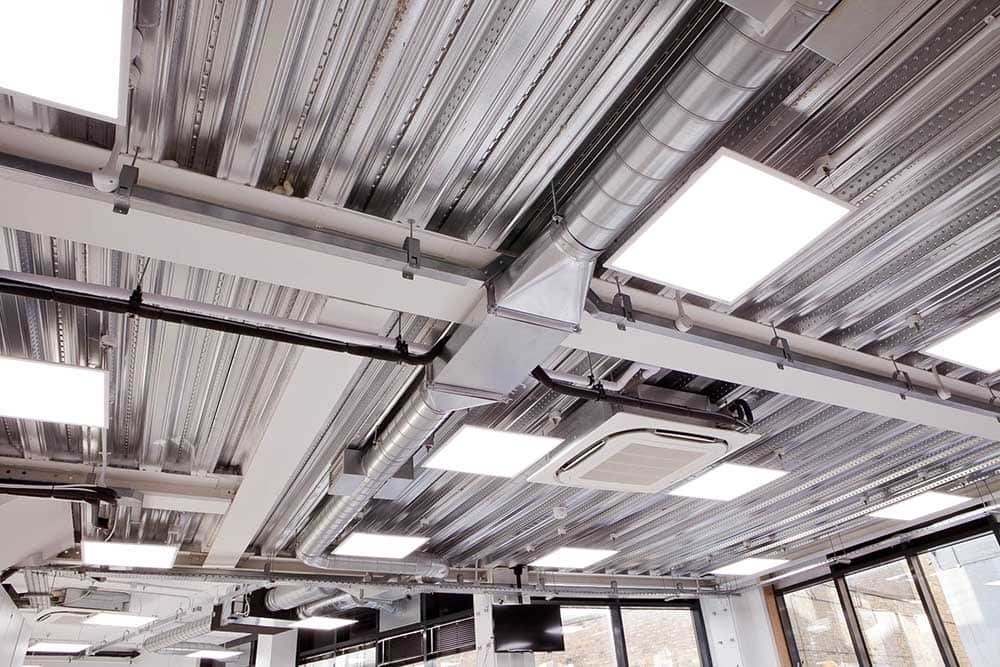Air conditioning has become a necessity for people living in hot and humid climates. It helps keep us comfortable and productive, even when the outside temperatures soar. But, have you ever wondered how air conditioning systems work? One essential component of an air conditioning system is the ducts. These are the channels through which the cooled air is distributed in your home or office. In this blog, we will take a look at the different types of air conditioning ducts and their uses.
What types of air conditioning ducts are there?
-
Sheet metal ducts
Sheet metal ducts are the most common type of ducts found in residential and commercial buildings. They are made of galvanised steel, aluminium or stainless steel and come in rectangular or circular shapes. They are easy to install, durable and cost-effective. They are commonly used in commercial buildings because of their sturdiness.
-
Flexible ducts
Flexible ducts are made of a combination of plastic and metal wire, which makes them flexible and easy to install. They come in different sizes and shapes and are often used in places where sheet metal ducts cannot fit, such as in tight spaces. They are also known for their energy efficiency, which makes them a popular choice for residential buildings.
-
Fibreglass ducts
Fibreglass ducts are made of a material called glass fibre and are known for their insulation properties. They are often used in residential buildings where energy efficiency is a priority. They are also easy to install and require minimal maintenance.
-
Duct board ducts
Duct board ducts are made of a rigid board material that is covered in fibreglass insulation. They are lightweight and easy to install, making them a popular choice for residential buildings. They are also known for their energy efficiency, which helps reduce energy costs.
-
Panned joist ducts
Panned joist ducts are a type of duct that is installed between the joists in the floor or ceiling. They are often used in older homes where retrofitting ducts can be challenging. They are known for their versatility, as they can be installed in any orientation and are often used to extend the reach of an existing duct system.
Determining the right duct type for your building
Now that you know the different types of air conditioning ducts and their uses, you can make an informed decision when it comes to selecting the right duct for your home or office. A professional air conditioning company can help you select the right type of duct for your specific needs and ensure that it is installed correctly.
-
Consider the size and layout of your building
The size and layout of your building will play a significant role in determining the type of duct that is suitable for your needs. For example, if you have a large commercial building with high ceilings and large rooms, sheet metal ducts may be the best option as they can handle a high volume of air. On the other hand, if you have a smaller residential building with tight spaces, flexible ducts may be more suitable.
-
Determine your energy efficiency goals
If energy efficiency is a priority for you, consider ducts with good insulation properties, such as fibreglass or duct board ducts. These types of ducts can help reduce your energy costs by preventing air leaks and maintaining a consistent temperature.
-
Consider your budget
Your budget will also play a role in determining the type of duct that is suitable for your needs. Sheet metal ducts are often the most expensive option, while flexible ducts and fibreglass ducts are more budget-friendly.
-
Consult the experts
Ultimately, the best way to determine the right type of air conditioning duct for your requirements is to consult with a professional air conditioning company. They can assess your building and help you choose the type of duct that is best suited for your needs. They can also ensure that the ducts are installed correctly, which is crucial for maintaining an efficient and effective air conditioning system.
Air conditioning ducts – The key points
In summary, when determining the right type of air conditioning duct for your requirements, consider the size and layout of your building, your energy efficiency goals, your budget, and consult with a professional air conditioning company. By taking these factors into account, you can ensure that you choose the best type of duct for your needs and enjoy a comfortable and efficient air conditioning system.



